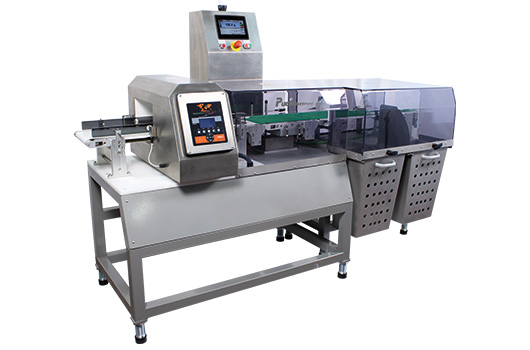How does a check weigher work?

HOW DOES A CHECKWEIGHER WORK?
Legal standards dictate that the average value of package weights must be equal to or greater than the label value, and no single package weight can be excessively greater or less than the label value. To meet these legal requirements and conduct an efficient packaging process, CheckWeigher operators and supervisors need to understand the principles of dynamic weighing and statistical package weight control. Applying this knowledge will enable companies to reduce issues with packages being either too light or too heavy.
STATISTICAL ANALYSIS OF DATA:
The filling of a product is influenced by factors such as wind currents, voltage fluctuations, humidity, changes in product density, and mechanical effects of devices involved in the filling process. It is subject to hundreds of random events. Due to these random situations, achieving equal weight for each filling is not always possible. Each weight value varies slightly from one package to the next, and events affecting the filling occur randomly and with equal likelihood. The weight distribution will follow the laws of distribution and is referred to as Normal Distribution.
There are two terms in statistics to describe and understand normal distribution: Mean or Average (denoted by μ and pronounced as "Mu") and Standard Deviation (denoted by σ and pronounced as "Sigma"). Graph number 2 displays two different bell curves with the same average value.
The mean or average is the sum of all values divided by the number of these values. For example, for five samples with a total weight of 65 kg, the average value will be found as 65 kg ÷ 5 = 13 kg. The average value is slightly above this value compared to the value on the package label. If the average is at or above the target value, the company is producing legal products, right? It would be okay if it weren't because the self-derived average value is not valid.
Example: Let's assume five different boxes weigh 2, 8, 10, 20, and 25 kg. The average value is 13. Assuming the labeled weight value is 10 kg and the target value is 11 kg. According to the average value of 13 kg, production is above the target and legal requirements. However, if you look at the package weights one by one, as given in the example, you will see that 2 boxes are well below the target, 1 box is on the target, and 2 are much more than the target.
We need to find a way to determine how far each packet is from the average value. In other words, what is the distribution of the data? Standard Deviation refers to the data distribution (Difference) from the average of a normally distributed group. In Graph 0-2, it can be seen that two different curves have the same average value, but their standard deviations are different. The wider curve has a larger standard deviation than the narrower curve. Look at the lines labeled μ +1σ and μ − 1σ on either side of the mean value of the curve in Graph 0-1. From these lines, we understand that 68% of all data is between Mean Plus 1 Standard Deviation and Mean minus 1 Standard Deviation. These lines will shift if the standard deviation changes, but the percentage between them will remain constant.
Going back to our box example, our Standard Deviation is 6.3 kg, and our average is 13 kg. According to the information we obtained from Chart 0-1, 68% of all boxes are between 3.2 kg and 22.8 kg. It is not a very good value, and it covers only 68% of the boxes. Let's say we want to know the range of 95% of the boxes. Using the definition, 95% of the weights fall between -5.6 kg and 31.6 kg. We ensure it's in between. It would be more accurate to express this statistic with the smaller curve in Graph 0-2. Let's assume that with a new filling machine, our new average is again 13 kg, and let our standard deviation be 1 kg. 95% of these packages will be between 11 kg and 15 kg, which falls into a smaller range. It is correct to express this range with the longer curve shown in Graph 0-2.
In production, the standard deviation of product weight is largely determined by the characteristics of the filling machine. Another purpose of controlled weighing and SQC is to control the filling process by increasing the average value in cases where the percentage value of the bell curve (Curve Determined by Standard Deviation) exceeds the legal limits.
